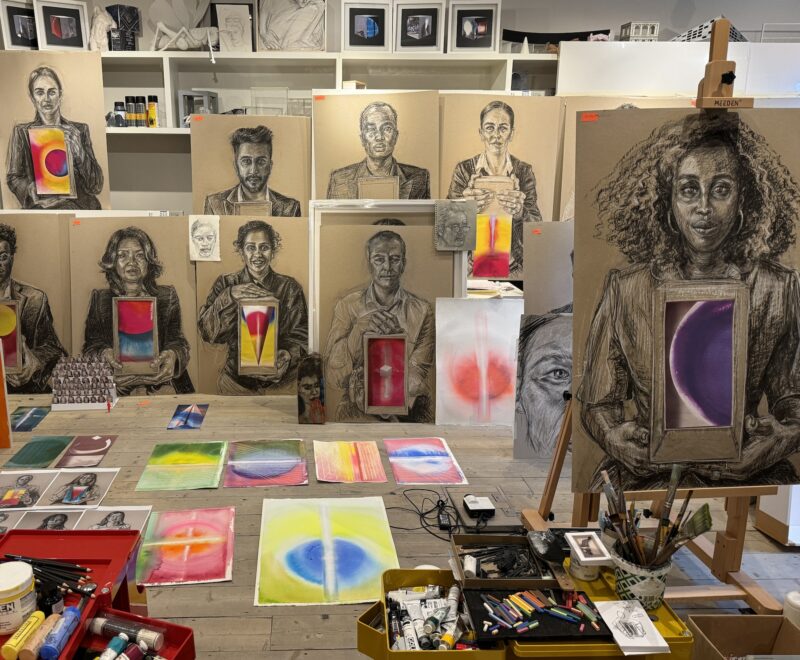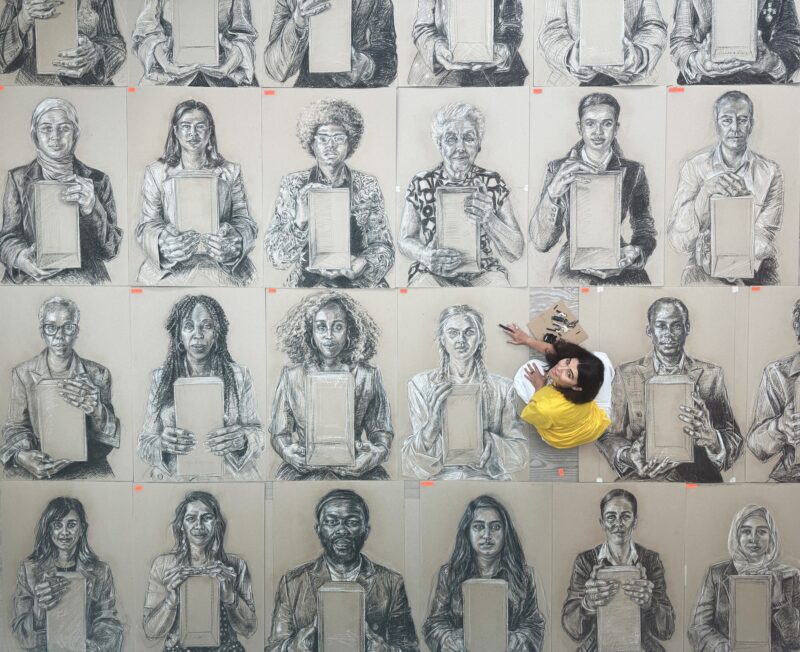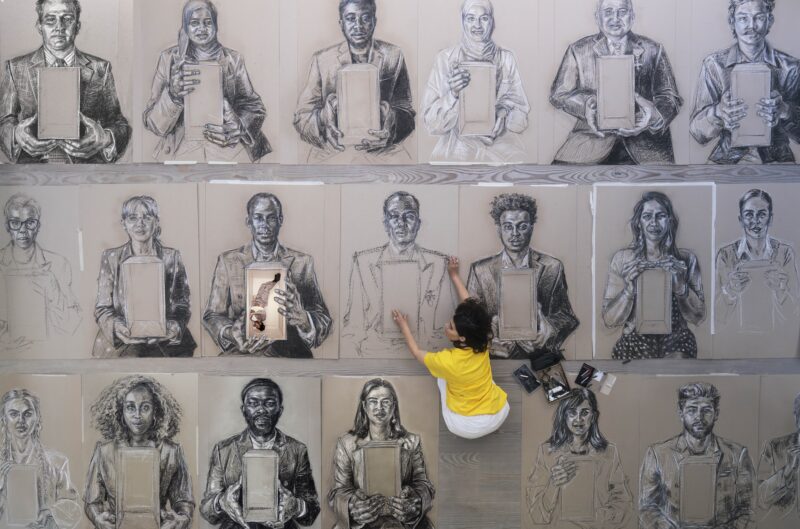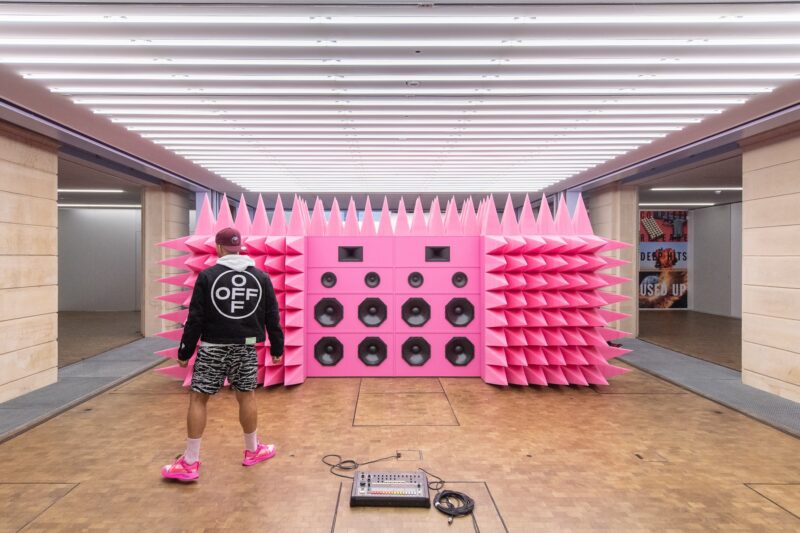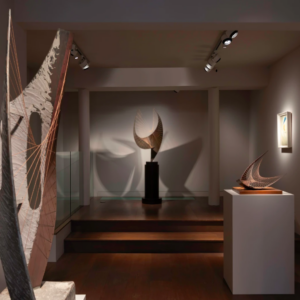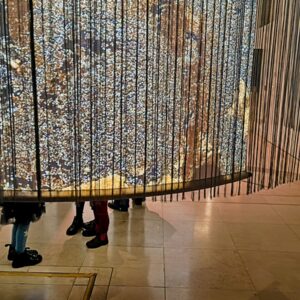Culture plays a central role throughout the week, serving as a powerful reminder that all experiences are, ultimately, culturally driven. After walking miles to explore as many installations and areas as possible, we’ve handpicked the highlights that offer a more artistically and culturally nuanced approach to design.
Opposites United: Eclipse of Perceptions by Kia Design
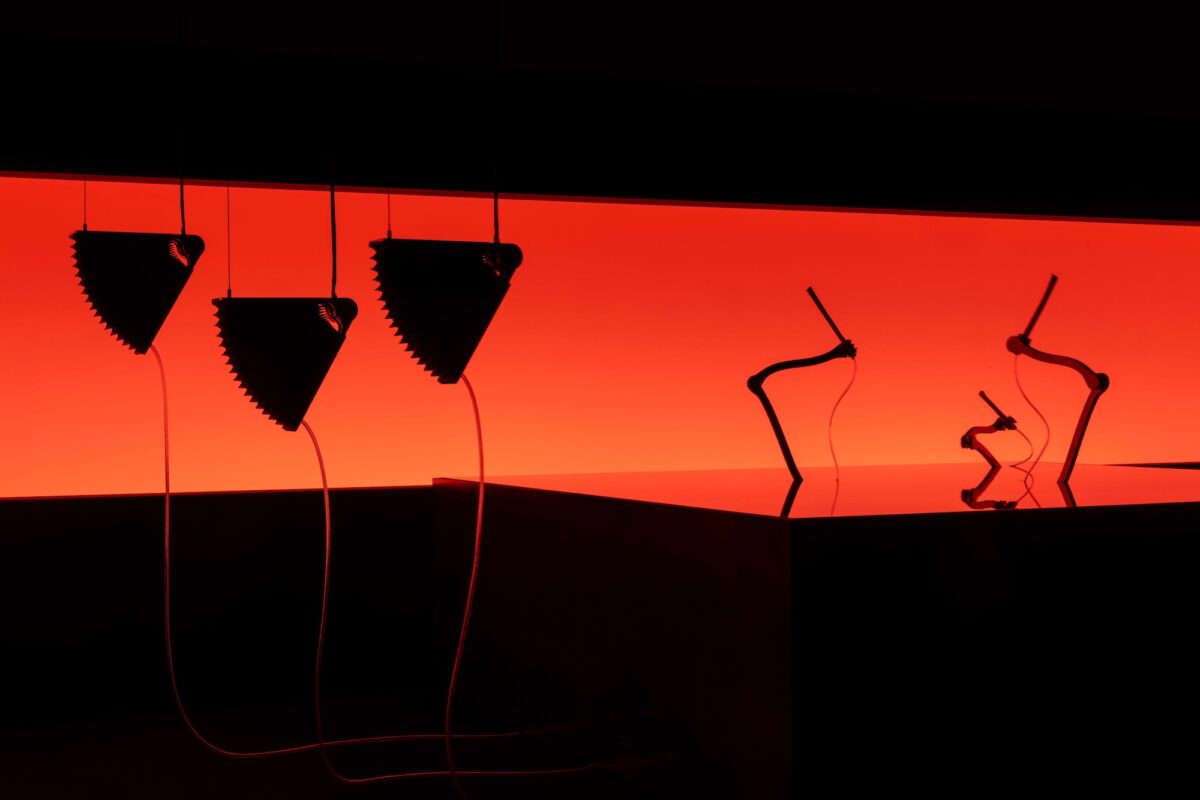
At the Museo della Permanente (until April 13), Kia Design’s Opposites United: Eclipse of Perceptions features installations by contemporary artists Philippe Parreno and A.A. Murakami, taking visitors on a sensory journey that echoes Kia’s evolving design philosophy—without a car in sight, much to our appreciation.
A.A. Murakami’s ‘The Cave’ fuses primal and technological elements to highlight humanity’s enduring creative impulse. Poetic and deeply human automatons with robotic arms gracefully move in an almost Martian landscape, bathed in a strong, immersive red light, reminiscent of lost worlds and hypothetical futures.
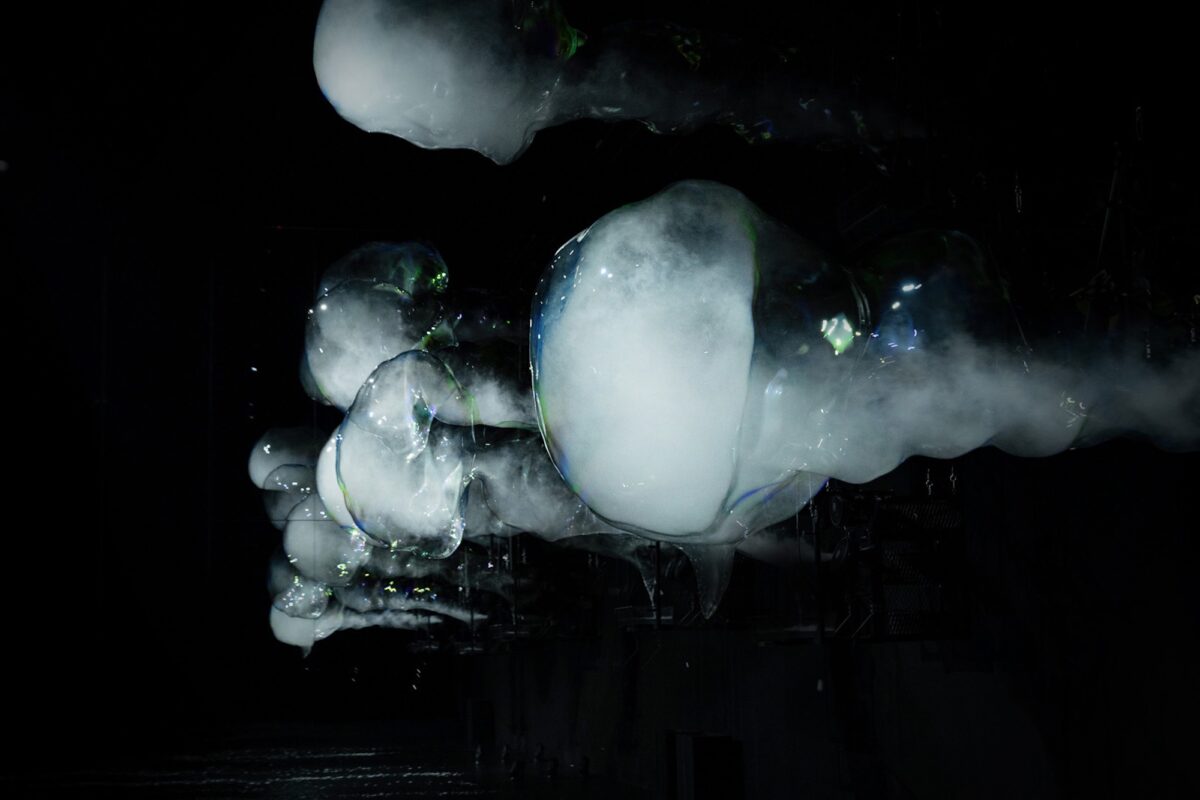
They emerge and submerge in a pool of water, drops gently bubbling on the still, oil-like surface as they rise and sink. ‘Beyond the Horizon’ is the second work by A.A. Murakami in this show. The display showcases giant, amorphous soap bubbles emerging from hanging robots and bursting into ephemeral clouds. Pushing the boundaries of traditional sculpture and installation, the work explores immersive, performative, and interactive dimensions.
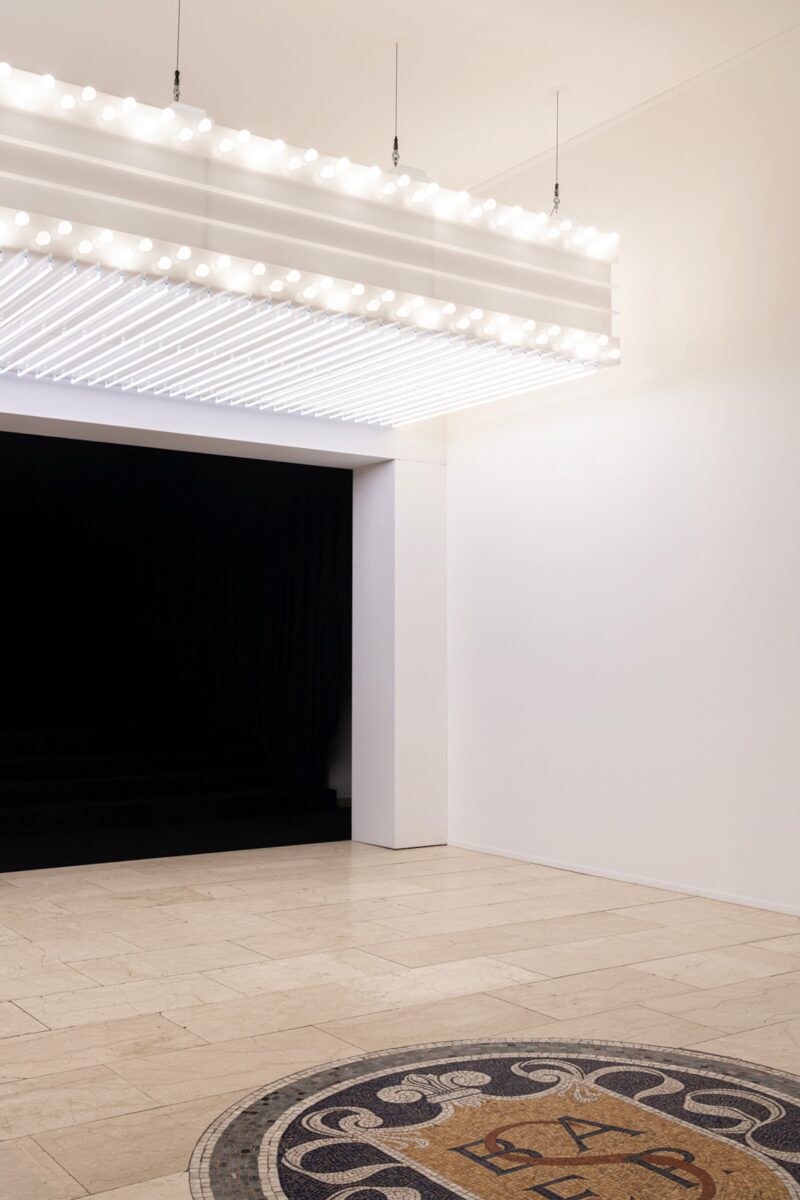
Located at the exhibition’s entrance, Parreno’s Marquee exemplifies the cultural vanguard by revitalising the historical marquee concept in the context of contemporary art. By blurring the lines between architecture, design, and performance, the work transcends its origins as a cinema frontage, with the text-free work instead focusing on light and form.
Supported by a stellar program of talks, Opposites United is an unmissable exhibition that stands as a sophisticated exploration of design. A must-see.
Staging Modernity, by Cassina
An immersive performance-based installation of particular note is Cassina’s Staging Modernity (until 13th April) theatrical performance, at the Teatro Lirico Giorgio Gaber. Celebrating the 60th anniversary of the Le Corbusier, Pierre Jeanneret, and Charlotte Perriand’s iconic collections for this historical Italian brand, the 2025 Milan Design Week’s presentation reinterprets in a provocative way the legacy of Modernism. Staging Modernity goes back to the roots of these now classic collections, based on the Salon d’Automne, a milestone in the history of modern architecture and design. It redefined the domestic environment as an industrial and functional machine à habiter, and liberated it from the weight of tradition—tubular furniture acted as a vessel aimed to propel oneself away from the mould and propose a revolutionary aesthetic, fit for a new era.
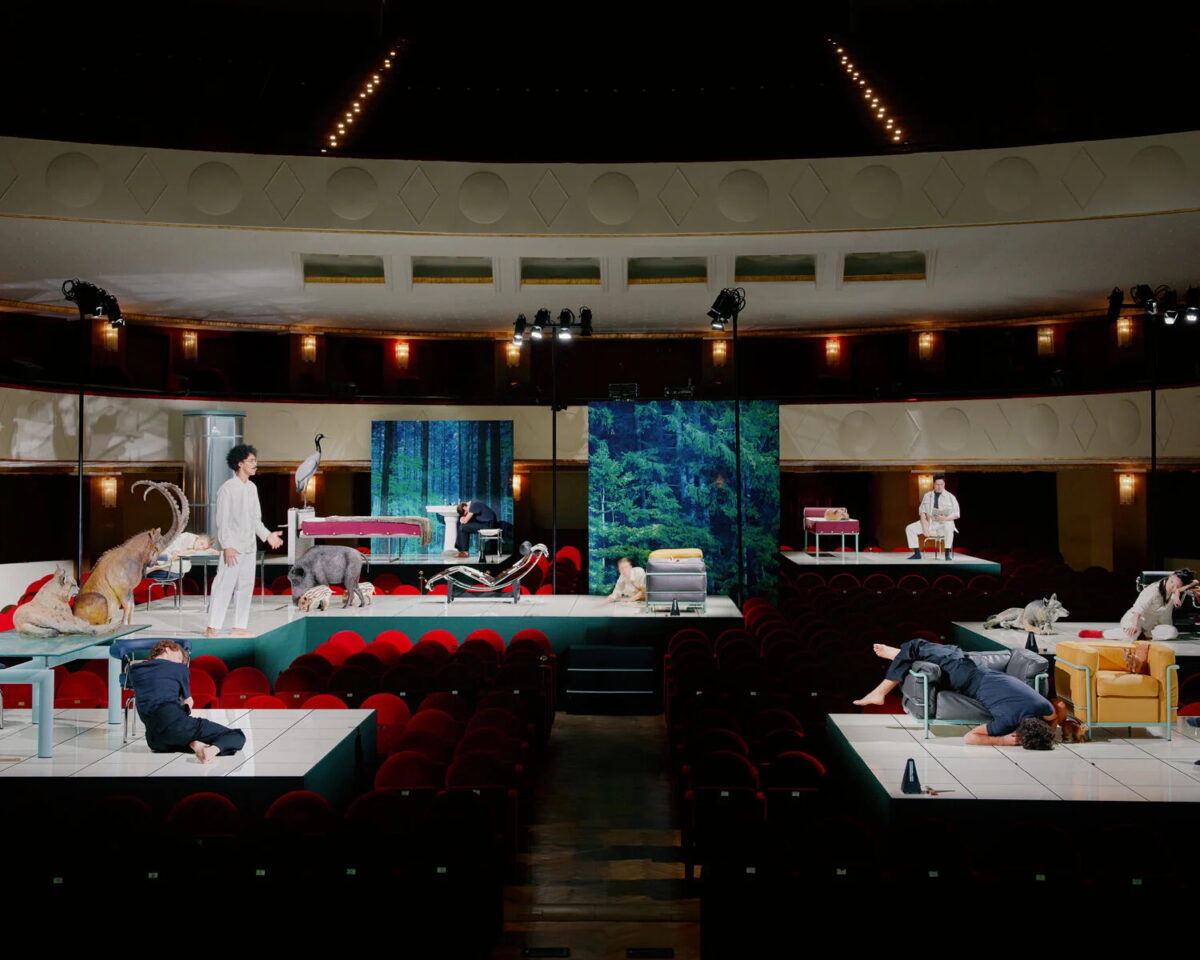
Cassina employed the talents of duo extraordinaires Formafantasma for this immersive theatrical experience, brought to life under the direction of Fabio Cherstich. Formafantasma approached Staging Modernity by scattering the iconic furniture across the space as if sketches, or vignettes—each evoking a vision that once was, but is now morphed into something else. The audience is invited to reconsider the idea of ‘modernity’. In this intervention, rational design and progress are not pristine visions of industrial perfection—the space is porous, populated by furniture, animal reproductions and groups of actors creating a world that is both harmonious and disturbing, modern and savage. The performance is based on three original texts commissioned from philosopher Emanuele Coccia, architect-writer and curator Andrés Jaque, and architect and artist Feifei Zhou (terriStories).
Spectators can walk right on stage and sit there as part of the performance. The thick red velvet curtains add a Lynchian flair to the experience—the theatre’s slightly faded, impressive design completing the scene.
Library of Light, by Es Devlin
Es Devlin’s Library of Light (9–21 April) is a Salone del Mobile installation at Pinacoteca di Brera, which cleverly wraps Antonio Canova’s towering statue in the central courtyard with a rotating illuminated library.
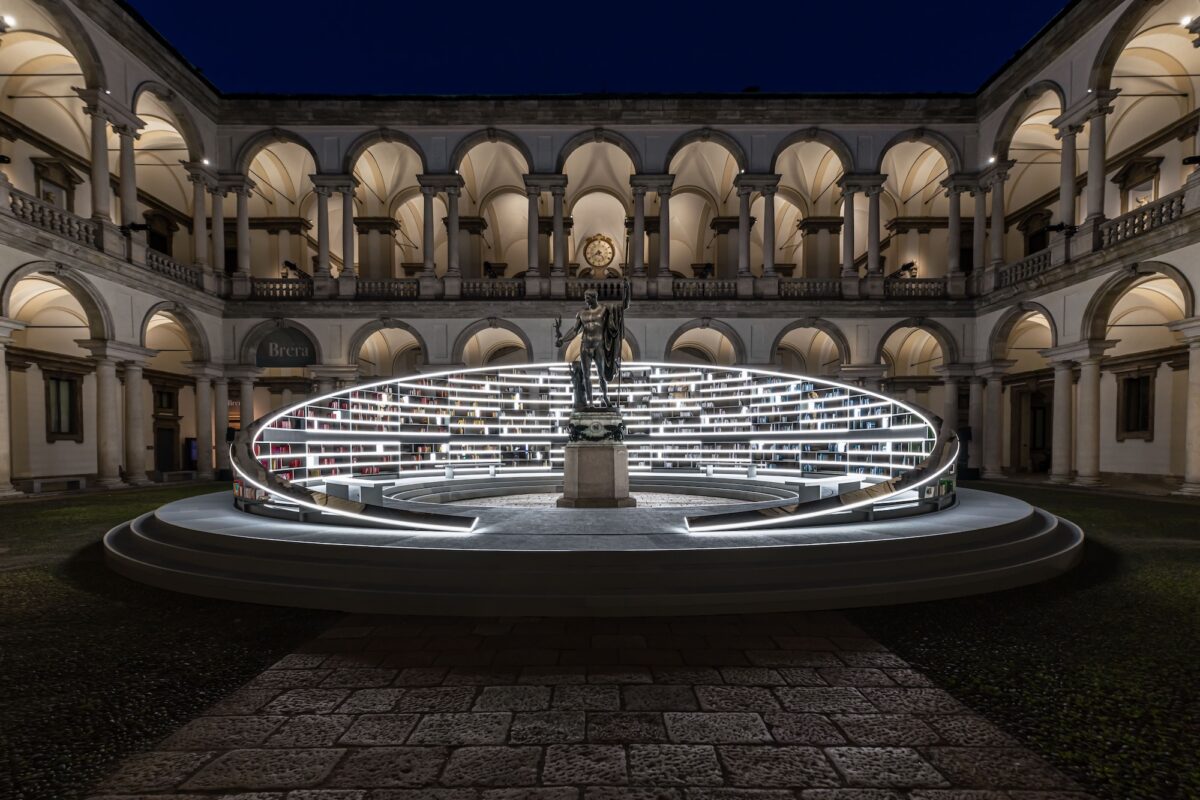
The 18m revolving cylindrical sculpture, formed of illuminated bookshelves, contains over 3,000 volumes donated by Feltrinelli, on the theme Thoughts for Humanity. During the day, while the structure turns, the angled mirrored plane at the top of Devlin’s cylindrical sculpture reflects the daylight into the columns, the statues of the portico, and parts of the building never previously penetrated by the rays of the sun. At night, its illuminated structure creates shadow plays on the walls of this venerable courtyard.
The rotating pace is gentle but noticeable. The books, grouped by colour, include an eclectic selection including Italian classics (we spotted our favourite Gattopardo by Tomasi di Lampedusa). The internal circle offers a number of benches, and while we sat on one of the steps, a poised voice narrated excerpts from the books on the shelves, as if told by the library itself. Visitors can browse the books and donate their own, helping to expand this public archive during the days open to the general public—books that will become part of the Milan Library System, continuing their journey through the hands and minds of other readers. Atmospheric and poignant.
Making the Invisible Visible, by Google Design Studio with Lachlan Turczan
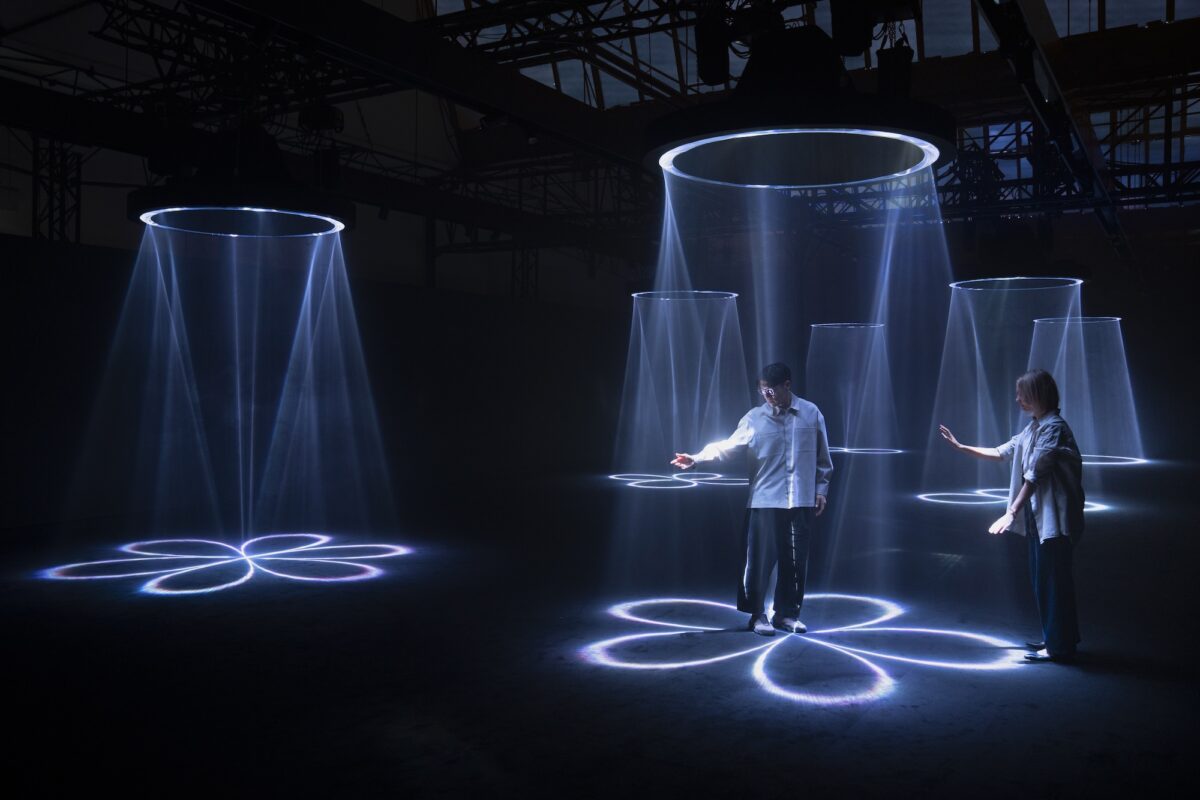
Google Design Studio’s Making the Invisible Visible installation (until 13th April), in collaboration with light and water artist Lachlan Turczan at Garage 21 in Via Archimede, is another standout. The level of care and accessible storytelling developed around a product journey—the earbuds, specifically—were impeccable, and we appreciated the masterful display narrating the journey from material inspiration (a smooth round rock found by one of the designers who is fond of surfing served as a model for how the earbud pods should feel; popping neon threads weaved in extremely satisfying geometrical patterns show us the thinking behind a smart watch straps). However, the centrepiece of the installation is Lachlan Turczan’s Lucida, developed in collaboration with Google’s Chief Design Officer of Consumer Devices, Ivy Ross.
Making the Invisible Visible sees the artist and the team at Google grappling with the task of making abstract ideas into tangible forms—in this case, making light tangible, palpable. We’re led into a pitch-black room to view Lucida, in which so-called veils of light slowly appear as our eyes adjust to the darkness. They are mesmerising, almost pulsating curtains of light, composed of incrementally interconnecting circles. The quality of the light is mist-like, and it’s this almost powdery, milky substance that we’re invited to interact with. Visitors are invited to approach the ‘veils’, and as they pass their hands through them, a series of large-scale optics and sensors create movement that ripples across their shapes, as if moved by our hands. The accompanying soundscape is also responsive, echoing the ripples of light with faster—or gentler—sound waves in return. By giving light the qualities of physical matter, Lucida hints at a future where form no longer relies on physical mass, but instead on energy and perception.
For an installation that sounded incredibly technical, it is undeniable that the team at Google have gone to great lengths to ensure the concept is clearly explained, while retaining technicality and sophisticated futuristic research—fit, of course, for the tech innovator that this brand is. We loved how the immateriality of the luminous veils gained a physical quality and yet remained in the hybrid space between physical and conceptual in the hands of Lachlan Turczan. We’re now wondering what possible applications the brand will derive from this.
Alcova
Alcova (until April 13th)—the itinerant curated exhibition of design—remains this year in Varedo, a village some 40 minutes by train from Milan. Four extraordinary venues have been selected to host an array of new products. We’re particularly impressed with the variety and the quality of the architectural backdrops, which elevate the design objects and offer—at least for architecturally keen viewers such as myself—an enchanting narrative. Alcova’s mission is to ‘embrace raw, abandoned, and unique urban spaces, temporarily transforming them into immersive design hubs where innovation meets heritage’. Music to our ears.
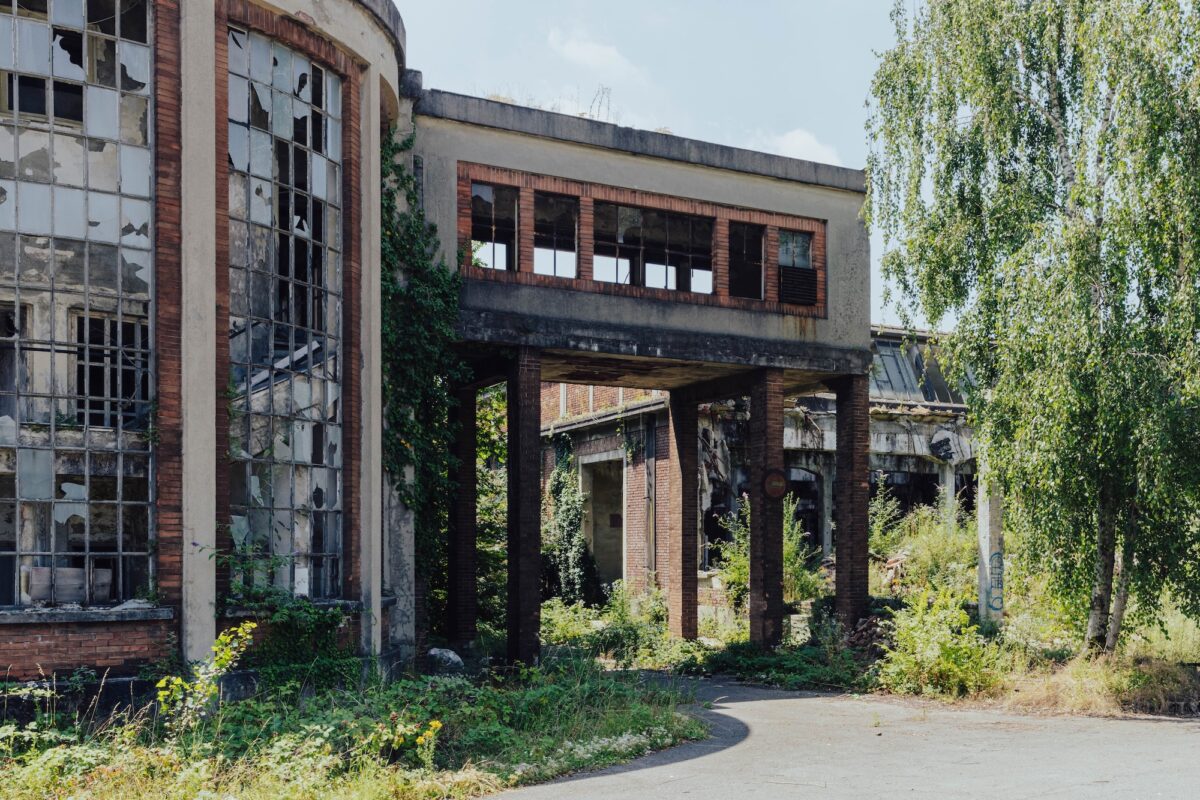
Our first stop was Villa Borsani, a pristine 1940s private residence. Approaching through the generous garden, the villa’s perfect proportions immediately stand out. Gifted with one of the best-designed Art Deco staircases, Villa Borsani hosts design objects and furniture collaborations, as well as arts and crafts works. The second venue is a nearby abandoned viscose factory (Ex Snia)—its cavernous spaces now symbiotically overgrown with indigenous plants, its cathedral-like pitched ceilings hosting industrial installations. Decibel x Vizcome presented new 3D-printed experimentations in circular design, complete with a fully functioning large-scale 3D-printing robot— reminiscent of the machines that would have inhabited those spaces a century ago. Japanese brand Spread’s folded aluminium installations, with neon-bright colours and neat edges, sharply contrasted with the ruins that surrounded these innovative pieces.
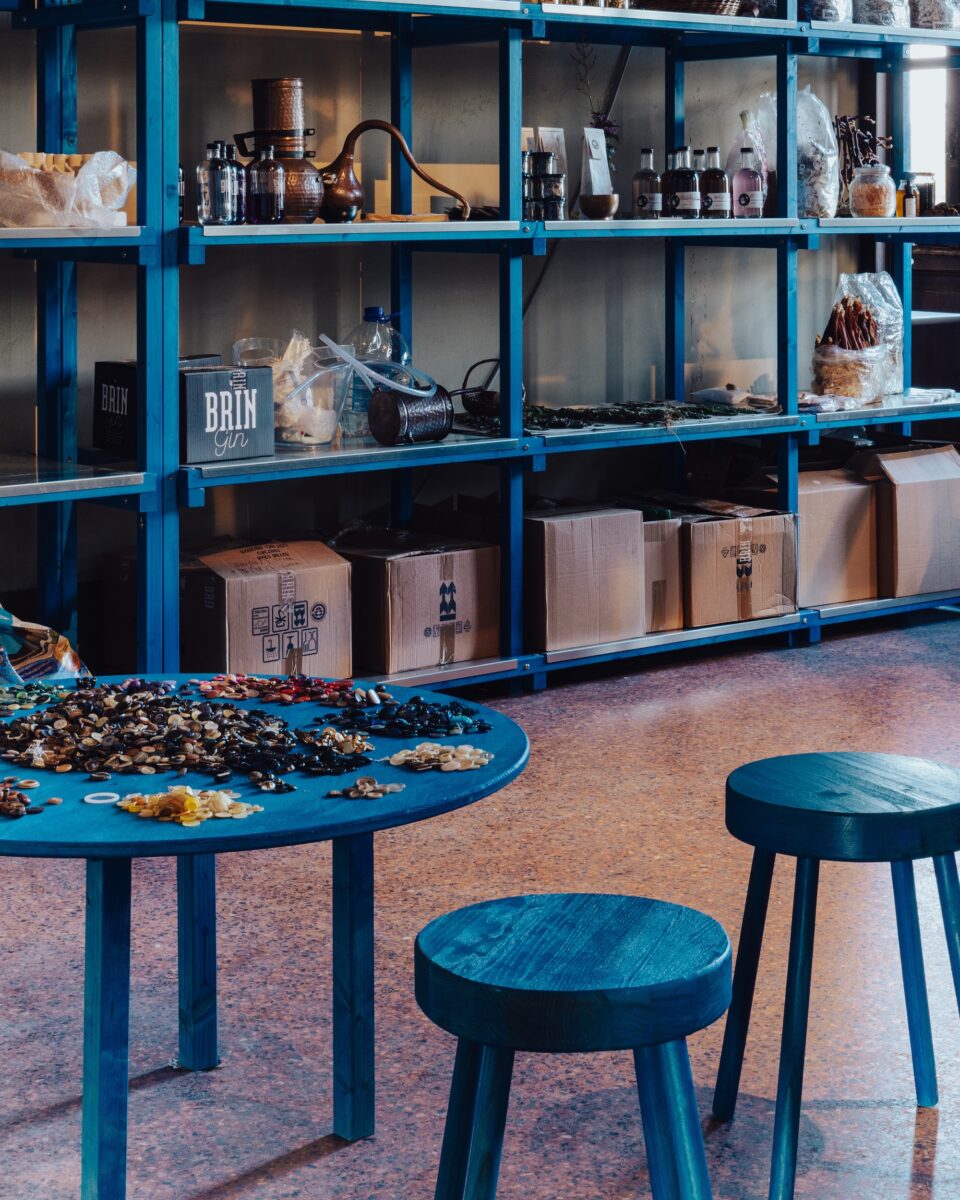
At Villa Bagatti Valsecchi—an abandoned grand country palazzo surrounded by beautiful gardens—highlights included Lara Bohinc’s Bohemia’s bulbous vases (the milky green one was a particular favourite), and Slovenian Material Bar, featuring a curatorial selection of practices and processes of making, with an anti-consumerist approach that stood out within a design show.
In the gardens, the Pasino Glasshouses, nestled within the outdoor hippodrome adjacent to Villa Bagatti Valsecchi, once housed one of Europe’s largest white orchid cultivations. Designer Marcin Rusak presented a collection of 3D-printed organic sculptures – the PLA derives from corn and other sustainable polymers – referencing giant ghost orchids: a happy coincidence considering the history of the site. These sculptures are kept in humid conditions, allowing them to follow a natural process of decay—as if alive. Clouds of smoking mist are pumped into the space at regular intervals, creating an eerie effect.
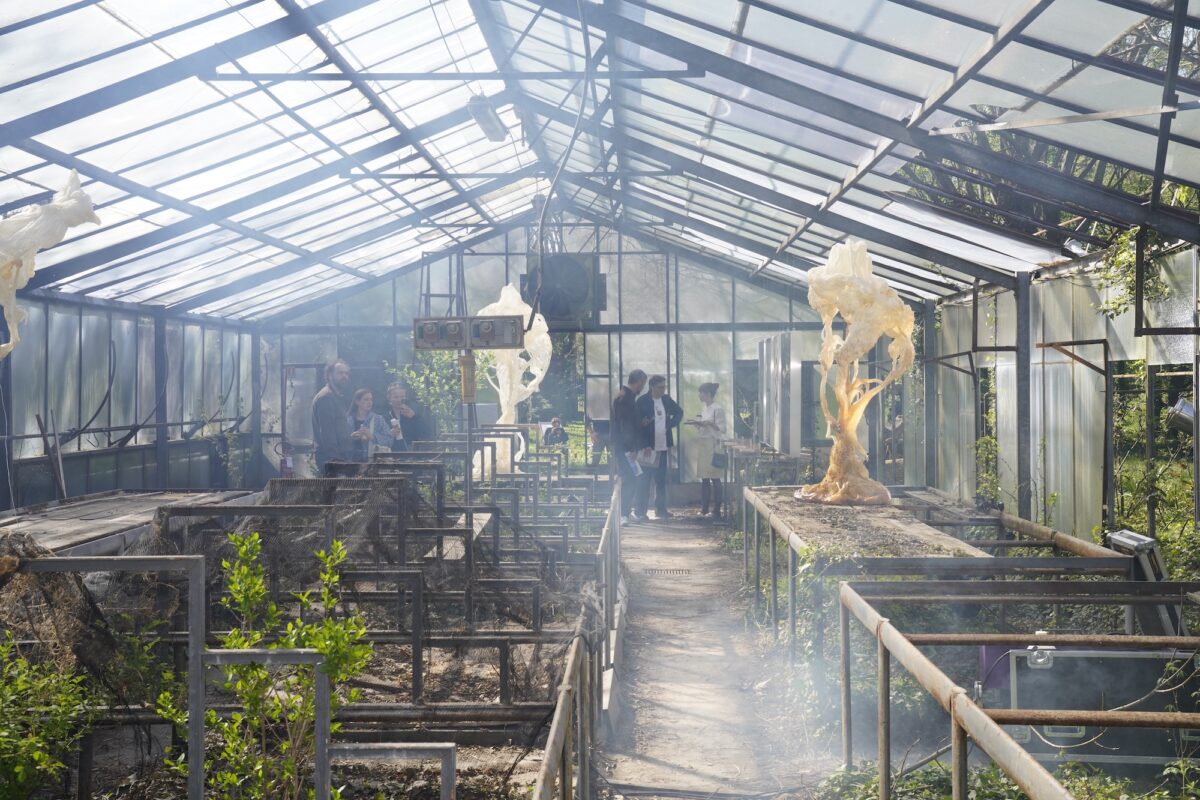
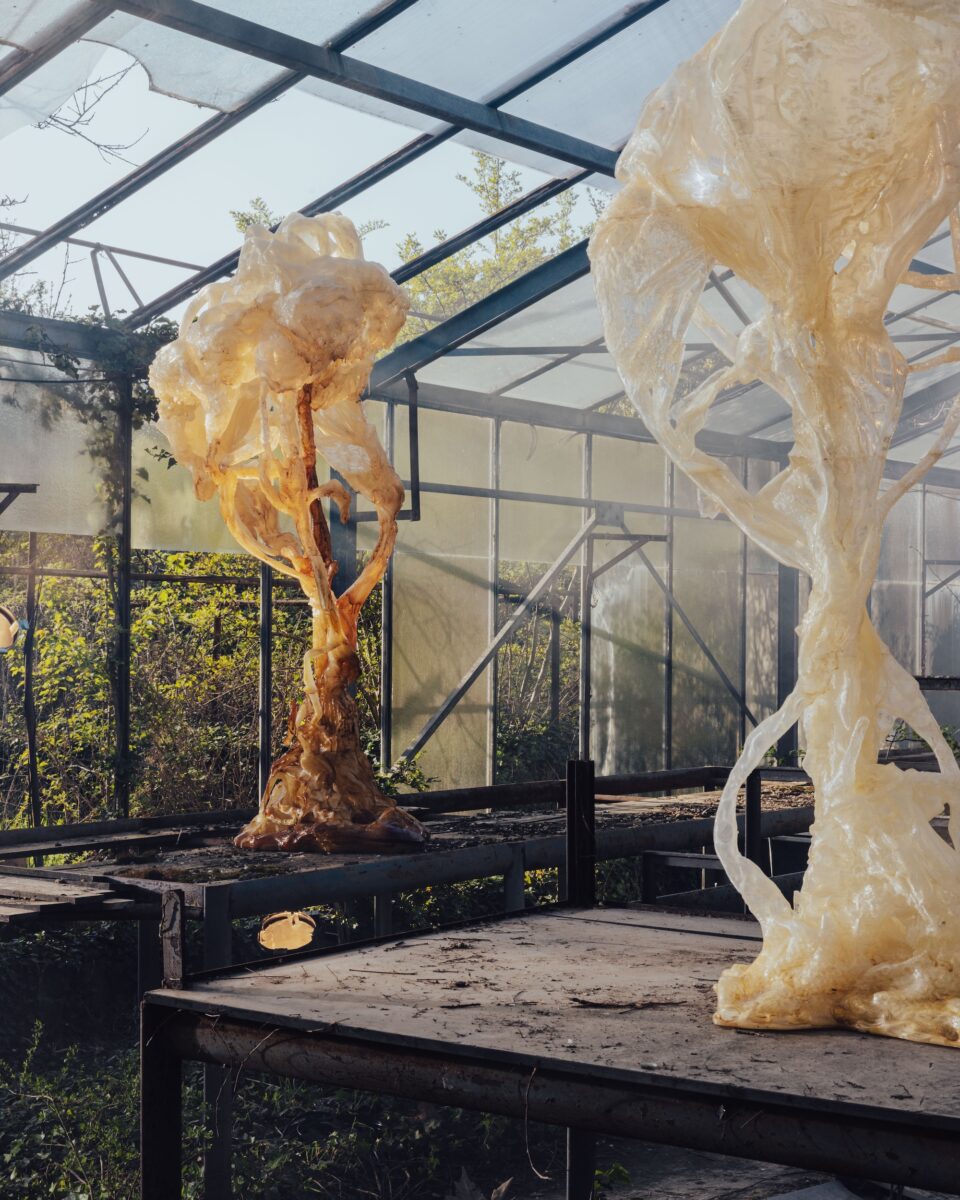
Weaving Anni Albers, by Dedar in collaboration with the Josef and Anni Albers Foundation

Back in Milan, another highlight was Dedar’s Weaving Anni Albers, in collaboration with the Josef and Anni Albers Foundation (until 13th April). This collection brings Anni Albers’ iconic textile works into a new era, balancing fidelity to her artistic vision with modern manufacturing innovation. Five classic Albers fabrics have been meticulously reproduced and reimagined using contemporary techniques and are expertly mounted on looms across the gallery floor, interspersed with a considered and limited selection of 1940s and 50s furniture items.
The exhibition’s venue—the gallery on the 16th floor of Milan’s modernist landmark Torre Velasca—offers the perfect backdrop. Designed by architects BBPR (including British-Italian Edoardo Nathan Rogers, uncle of Richard Rogers) in the 1950s, its imposing structure is reminiscent of a medieval fortress while being grounded in the Milanese modernist design revolution post-war. The unobstructed views across Milan and the striking architecture offer a unique context to this exciting collaboration.
Milan Design Week is the epicentre of the design world for this week—there are hundreds of installations, exhibitions, and beautiful displays in incredible locations – it’s impossible to visit them all. In addition to the above, we recommend visiting the stunning Bocci house, celebrating the 20th anniversary of the Canadian lighting brand; L’Appartamento by Artemest; Casa Milana; and Casa Cabana, for those enjoying stunning residences with a phenomenal accumulation of tasteful and authentic interiors, where new and old treasures seamlessly blend in.
Over at the Triennale di Milano, Wallpaper magazine’s Material Alchemists features international talents with a bright future ahead of them—we particularly enjoyed seeing Scottish designer Marc Sweeney’s sculptural chair on display.

